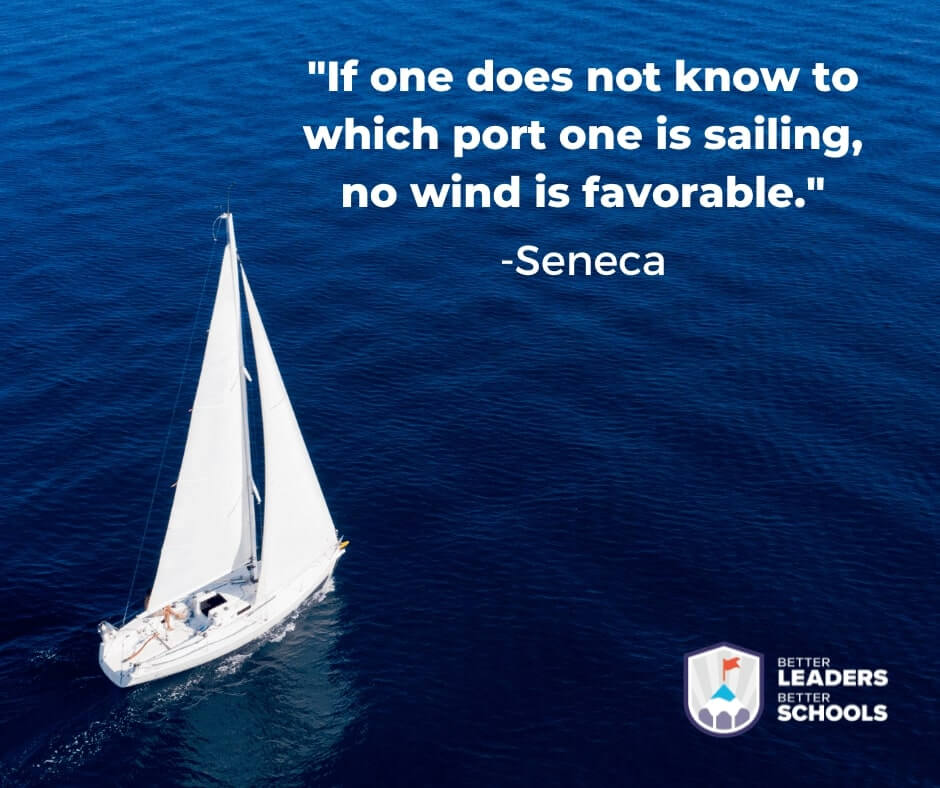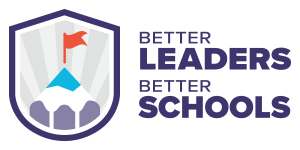
If you are worried that you are a bad principal or assistant principal …
Or that you work for one, here are seven warning signs this might be the case.
Faculty do not trust each other nor take risks
Poor performance can always be linked to a lack of psychological safety.
I wrote in my latest book Mastermind: Unlocking Talent Within Every School Leader:
In 2015, Google released the results of a two-year study in which their People Operations team conducted 200+ interviews with their employees to find out what makes their teams effective. They looked at more than 250 attributes of 180+ Google teams. The results were surprising. They thought they would find the importance of key personnel, “super stars,” but in reality how the team members interacted with each other was far more important than who made up the team. At the top of their list of effective teams was psychological safety, and they define this term as “Team members feel safe to take risks and be vulnerable in front of each other.”
If you don’t feel safe enough to take risks within your teams at work, there is no way to create a better school culture.
Todd Whitaker says, “When a principal sneezes., the entire school gets a cold.”
I like to think of it this way: You are a meteorologist.
Your presence (your energy) impacts every aspect of the school — most importantly, the culture.
If you are experiencing a toxic environment, that is on your shoulders.
Seth Godin says it this way …
“You get the culture you deserve.”
Either you are contributing to the toxic environment via your energy and actions, or you are absent from work — not addressing the bad teachers and poor performance.
The lack of psychological safety is one sign you’re struggling, the next has to do with ineffective meetings …
Meetings that go nowhere …
One thing that unites parents, students, teachers, and principals is that they hate meetings that go nowhere!
And yet, this is the sad norm for most schools.
What is the point of a meeting?
A meeting should accomplish something that other forms of communication cannot.
If you are meeting to share information, send a memo.
If you are gathering because each Monday at 2pm is reserved for a grade level meeting, that’s not a good enough reason either.
A meeting should be fun and action oriented.
They should really be focused on only three things:
- Creative discussion that would be best in person and not asynchronous
- Arrive at consensus and make a decision
- Take action as a team on a project
A lack of structure and roles will tank any gathering of people.
This easy to solve for. Here is the process:
- Every meeting must have an agenda.
- Assign roles (e.g. facilitator, time keeper, secretary, and so on …).
- Establish WHO, WHAT, and WHEN for each item that needs to be accomplished.
- And reign people in when they start to complain or get off topic.
Most principals have the ability to both have fun and get stuff done at work.
The best advice I ever heard comes from Cameron Herold, who offers two solid meeting tips:
- Always end five minutes early (everyone will love you for this).
- Schedule your meetings for half the time you think it will take (e.g. If you think the meeting should be 60 minutes, schedule 30 minutes). This is Parkinson’s Law — a task will expand or shrink to the time allotted to it. You’ll be surprised that you’ll start getting just as much done, in half the time!
Now that you can run a tight meeting, make sure your PD isn’t garbage …
Lack of meaningful professional development
I never understood why most professional development sucks.
Educators work hard to personalize and differentiate instructions for their students.
Then something weird happens … as adults we decide that “sit and get” and lectures are the best way to present staff development.
It’s not the best. It’s just the easiest and laziest.
Administrators … do better!
If you want your team to be interested, tell more stories, engage educators throughout the staff meeting by welcoming participating and co-creation, and vary up your approach and activities.
In 2015, I started the Better Leaders Better Schools podcast because I had a problem.
The professional development offered I experienced was Too Little Too Late, Unhelpful, and Disconnected. It also focused on what I call the “Three Pillars” of education: Academics, Attendance, and Discipline.
While all those topics are important, they weren’t motivating and certainly not the reason I became an administrator.
I was interested in topics like:
- How do you create a meaningful school vision that is real and guides the work of a school?
- How do you successfully navigate the turbulent waters of difficult conversations?
- How do you address the inherent inequities our kids experience in districts around the nation?
But we weren’t talking about that in staff development meetings. So I was tuned out. Your classroom teachers are also tuned out as well.
Instead, do the hard work of creating professional development that is Responsive, Relevant, and Results-Oriented.
The BEST way to do that is to leverage a framework I created called the ABCs of Powerful Professional Development ®.
By integrating more Authenticity, Belonging, and Challenge into the PD experience your district or school offers, you will see a transformation to a better school culture, guaranteed.
Professional development is a problem for many administrators, but how they talk about the future can be even more damaging …
No clear direction communicating an ideal future

A lack of direction is one of the most common ailments found in a struggling school.
When one teacher is moving in a single direction and all her peers are moving in different directions, this is not a good thing. It just shows how your school lacks direction.
Vision is the job of leadership.
A common mistake I see administrators make is involving everyone in the process of creating a school vision.
This is a mistake because not everyone wants to be a part of this discussion.
Now, they do want a voice and should have an opportunity to contribute, but most schools approach the work of crafting a meaningful vision the wrong way.
You were hired as principal. Lead!
Do you think Apple rallies each and every employee when setting the vision?
Absolutely not! This is the work of the leadership team.
The principal and assistant principals should create something before bringing it to other staff members.
Over communicate that what the you created with the other administrators is a draft. Water mark every document with DRAFT written in bold.
Then start to collaborate. Invite anyone who wants to contribute.
Listen and take great notes.
Reflect back what you’ve heard from your teachers, parents, and students.
Don’t stop reflecting until you start to hear “That’t right” from everyone.
Then revise and repeat the steps with your community (check out this blog post on vision for a deeper dive).
Proverbs 29:18 states, “Where there is no vision, people perish.”
A strong vision will identify your school’s priorities. It clearly communicates where you are going and WHY that matters.
A principal needs to articulate to the faculty why the present set of conditions right now is no longer good enough, and then paint a picture of a future so attractive that educators can only respond by making it a reality.
That’s why a lack of vision is such a detriment to your school culture. It’s a missed opportunity to get everyone moving in the same direction for good.
Lack of direction shows poor focus, but make sure you aren’t focused on things that can’t be leveraged either …
Focus on the “wrong stuff”
People are not cogs.
Any leader who focuses too much on most tasks regarding compliance is in trouble. Your staff will HATE working for you and you’re missing an opportunity.
A common example of poor leverage: teachers turning in weekly lesson plans.
Treat your teachers as professionals. Hold them accountable for the classroom environment and results they produce, but don’t ask them to do something that’s not purposeful.
Unless you are providing feedback on lesson plans and having robust conversations about improving the curriculum of your school, this is an example of compliance work that teachers find demoralizing.
As the leader, it’s your job to articulate the WHY behind certain tasks and help people see how something might make their job easier or their instruction more effective.
Years ago, I rebelled against calling every parent whose kid who was going to fail my class.
My principal asked me to do this weekly.
As a teacher, I disliked this practice. It was a lot of work and I was equal lazy, but I was also a nervous about what I might experience on the other side of a parent call.
I certainly didn’t want to get cussed out!
It’s also exhausting when teachers listen to parents whose children are perfect and allegedly never do anything wrong.
But I worked for an amazing principal — Liz Kirby — who challenged me to not only call, but keep a written record of all the parent conversations.
The result …
Less kids failing and better communication with my parents. We were on the same team.
Another way leaders often mess up focus is prioritizing OUTPUTS over INPUTS.
Schools actually have no control over student achievement scores, attendance rates, and behavior.
What they do have control over are the INPUTS.
If you want better student achievement data, then measure inputs like:
- quality professional development offered to teachers
- strong and culturally relevant curriculum
- better and effective teacher feedback
- and so on …
If you want higher attendance, then measure inputs like:
- every student is connected to at least a teacher they know cares about them
- removing obstacles (lack of transportation) for your students
- make school safe and fun to attend
- and so on …
If you want lower discipline, then measure inputs like:
- implement restorative circles and teach students how their choices have consequences
- create a robust PBIS system
- highlight and celebrate when students make positive choices (you tend to get more of what you acknowledge and expect)
- and so on …
Separating the personal from the professional
“Is there anything worse than an out-of-touch, unrelatable leader?”
-Daniel Bauer in Mastermind: Unlocking Talent Within Every School Leader
One major mistake I see a lot of leaders make is prioritizing the “business” of school over everything else. You may have been told to separate the personal from the professional, but that common advice is also incorrect. It’s as prevalent as what educators hear when they first start teaching — Don’t smile until December.
Separating the personal from the professional just makes you less human. Same as not smiling in front of your students.
This poor advice is rooted in power and authority. The idea is that your power is lost if you establish relationships with those you serve.
This advice is rooted in fear.
These are not good qualities to have as an administrator or as an educator in a classroom.
Don’t be afraid to establish strong relationships through vulnerability. Of course, there is such a thing as sharing too much. Try not to cross that line.
I’m not saying to be a friend to each teacher or your students. I’m just saying it doesn’t hurt to be friendly and human..
So don’t be a robot if you can avoid it, and consider the last of our warning signs …
The school is no fun for children or adults!
In my first book, The Better Leaders Better Schools Roadmap: Small Ideas That Lead to Big Impact I wrote:
I know Disney thinks that it is “the happiest place on Earth,” but in my opinion, the happiest place should really be school. It is not the Disney brand that makes it the happiest place; it is the imagination of the kids. Where Disney excels is that they make the environment ripe for imagination to grow, explore, and play.
If you agree with this assertion, then schools should be a super fun place to be and for everyone involved!
Then why are so more schools, the opposite of this?
We get caught up on the high stakes and forget about the bigger picture.
Think about this …
What are your TOP THREE memories from school?
Did you pick anything regarding testing? I bet that most people reading this post probably thought about a sport competition, a drama or music performance, or a significant moment in their development (e.g. like a time you acted with courage when scared or your first kiss).
If that is true, then what is school for?
And before you answer that question, we all know that nearly any question-answer can be looked up on Google.
Your district can all learn from Zappos …
Zappos is a highly successful business and well known for it’s amazing culture.
The founder of Zappos, Tony Hsieh, believed: For a company to succeed, employees must have fun and be surrounded by great people.
“At Zappos, we really view culture as our No. 1 priority. We decided that if we get the culture right, most of the stuff, like building a brand around delivering the very best customer service, will just take care of itself.”
According to Customer Loyalty Representative Gretchen Herrera: “You wake up in the morning and you’re happy, and you know you’re coming to a happy place … If you ever think about coming to us, you’ll have an extra 1,600 family members who will love and cherish you. We’re always looking for amazing people.”
Imagine having that kind of culture at your school …
Imagine being the kind of principal who created that environment in your building.
Next steps if YOU are a bad principal …
- Reflect and identify any of the warning signs shared in this article. Are you making these mistakes? Make a plan to improve them.
- Hire a coach or mentor.
- Join a mastermind.
Next steps if you WORK for a bad principal …
- The first step is communication — share what you are experiencing (but only if the administrator is open to feedback).
- Understand what’s in your control and what is not. Focus only on what you can control.
- Consider moving to a new district next school year.


